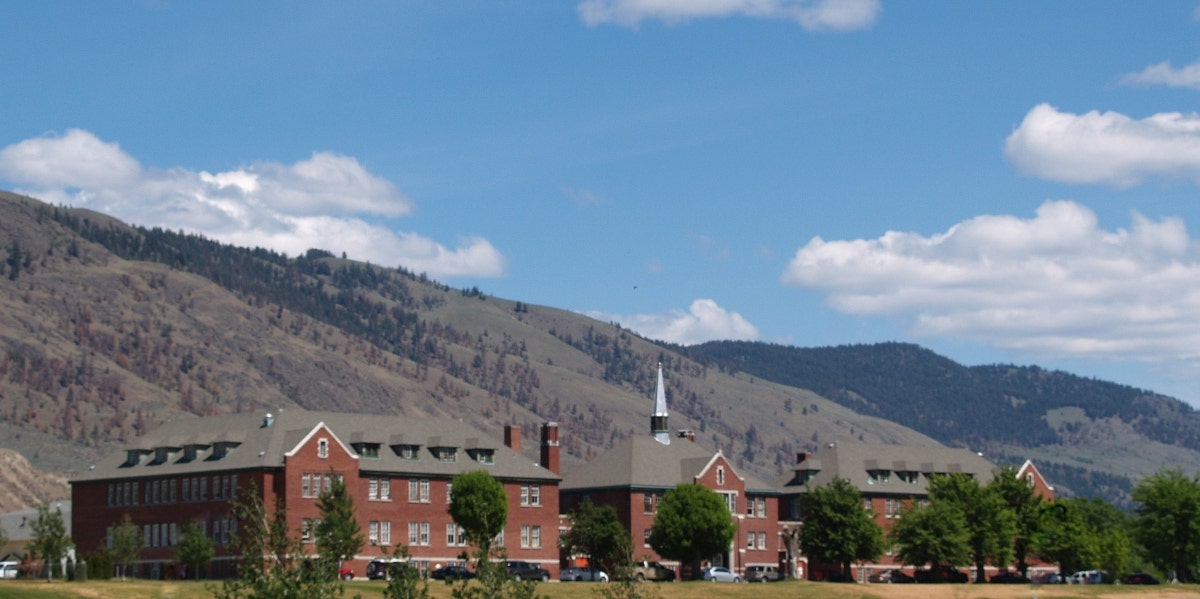Why The Remains Of 215 Children Were Just Found Buried Under A School In British Columbia
First Nations are in mourning.
 Bruce Raynor / Shutterstock
Bruce Raynor / Shutterstock The remains of 215 children have been discovered on the grounds of the former Kamloops Indian Residential School in British Columbia, according to the Tk'emlúps te Secwépemc First Nation.
The school, which would have been controlled by the Catholic church, was in operation from 1890 to 1969 and housed up to 500 students from indigenous communities across British Columbia.
The discovery is a damning confirmation of what many of these communities have been highlighting for years — that many children went to these schools and never returned.
The deaths, which appear to be undocumented and unexplained, are part of an ongoing issue with a lack of transparency about and accountability for what First Nations children experienced in these schools.
"There may be reasons why they wouldn't record the deaths properly and that they weren't treated with dignity and respect,” says Mary Ellen Turpel-Lafond, director of the Indian Residential School History and Dialogue Centre at the University of British Columbia in Vancouver.
“That was the whole purpose of the residential school... to take total control of Indian children, to remove their culture, identity, and connection to their family."
Addressing the traumatic history of these schools is the mission of First Nations and Native American advocacy groups in Canada and the United States. But discoveries like this demonstrate the many obstacles between indigenous communities and their quest for truth.
Indian Residential Schools have a traumatic legacy.
The schools were established by colonizers across North America in the 19th Century as an attempt to strip native populations of their cultural identities.
In response to Native Americans' resistance to westward expansion, the schools became an attempt to weaken indigenous communities.
This government-sanctioned “civilizing” forced tens of thousands of Native American and First Nations children out of their homes, without the consent of their families, and into boarding schools.
Children were forced to cut their hair, forbidden to speak their own language, and forced to give up their names and adopt European names. Christianity was enforced over their own religious beliefs.
Survivors have recounted physical, sexual, cultural and spiritual abuse. The infamous motto of these schools was, “kill the Indian, save the man.”
Native populations want accountability.
In the U.S., the forced removal of Native American children was not outlawed until the 1970s.
The schools ultimately failed in their efforts to stamp out indigenous culture. Native American and First Nations communities retained strong cultural identities throughout centuries of oppression.
But, the long-term impacts of these schools and the lack of accountability by both the Catholic Church and the government is part of an ongoing neglect of Native American and First Nations rights, culture, and history.
Equally, the lack of education given to non-Native populations about the history of these heinous events demonstrates a willful ignorance about the intergenerational trauma inflicted on indigenous communities.
This has created a distrust of the education system within some Native American populations as they question the merits of a system that was designed to dismiss their place in their own country's identity.
First Nations continue to grieve lives lost in residential schools.
"There are no words to express the deep mourning that we feel as First Nations people, and as survivors, when we hear an announcement like this," said the president of the Union of British Columbia Indian Chiefs.
He spoke of mourning alongside the Tk'emlúps te Secwépemc who have been overseeing the project to uncover the remains in a culturally appropriate way.
Within this mourning, there are demands from First Nations communities for truth and transparency about the events that took place inside Indian residential schools.
The Truth and Reconciliation Commission that was set up in 2008 to uncover the history of these schools was originally told there were just 50 deaths there.
Turpel-Lafond expressed disappointment over the refusal of Catholic entities to release historical records from the schools.
Meanwhile, Tk'emlúps te Secwépemc Kukpi7 (Chief), Rosanne Casimir, is calling on the government to do more than just offer gestures of support.
"There is an important ownership and accountability to both Tk'emlúps te Secwépemc and all communities and families that are affected. And that needs to happen and take place."
Alice Kelly is a writer living in Brooklyn, New York. Catch her covering all things social justice, news, and entertainment. Keep up with her Twitter for more.

